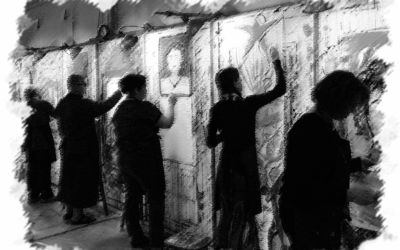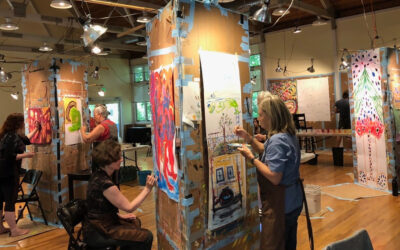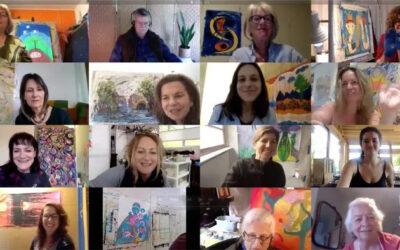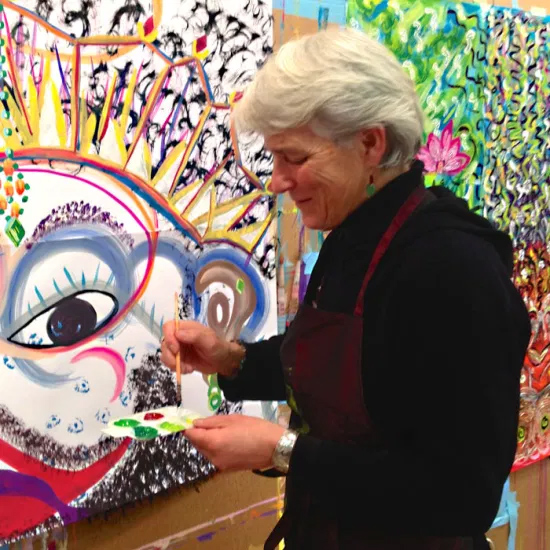
I hadn’t realized how much I needed to play, and my body and spirit jumped at the chance.
My first sensation in a process painting workshop was the feeling of happy, engrossed play. I was in a crowded studio at Esalen, there were rows of vibrant color, brushes of various shapes and sizes, the medium was beckoning and my paper was blank.
Our initial guidance was so simple: Proceed in silence without engaging others, refrain from comments or the judgmental gaze. I felt profound permission to just be with the paint, paper and my imagination. I remember almost dancing back and forth from color to brush to paper. The invitation was to freely explore: “What calls to you? Is it a certain brush? A certain color? A way of moving your brush across the paper?”
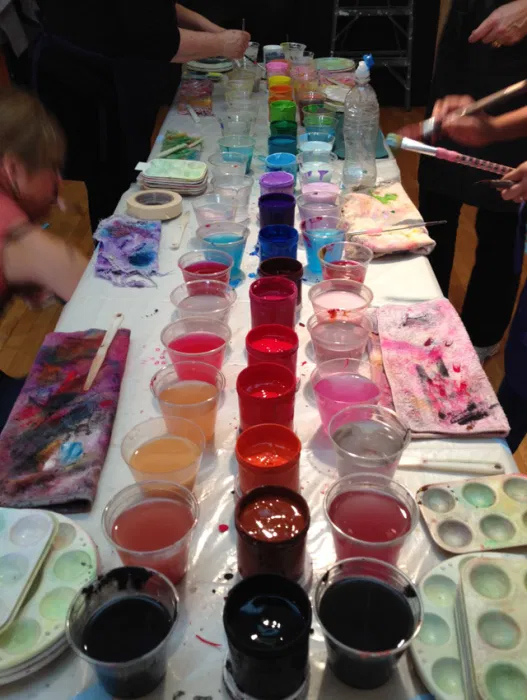
It’s Okay to Have Fun!
When I was a child I made things: Whole worlds were created under trees on my school playground or on my bedroom floor. I built plastic horse models and I drew pictures and painted. One day, in my fifth grade art class, I was happily and proudly painting a blue jay perching on the tip of a cattail. I had seen this bird while exploring our neighborhood wetland and I was engrossed in reproducing what I’d seen. At that moment the art teacher approached and told me to stop moving my brush up and down like a house painter: “You can do that when you are at home painting a wall with your mother.”
I was devastated. The fun had gone out of my making. Her piece of technical advice utterly deflated me. I have never forgotten that popped balloon feeling, and this process painting workshop magically returned me to the moment before that comment: I was painting, and I was having fun.
I found myself layering shape on shape — exploring the unintentional, playing with drips and mixing colors on the paper. I was mesmerized — not by an image but by the movement, the freedom, the unexpected feelings inside of me. At that point in my life I was giving myself a good deal of freedom. In the previous year, I had endured the loss of my right breast to cancer and the loss of a job that meant a great deal to me. I was taking a “sabbatical” from residential architecture and adjusting to my new body when I found my way to The Painting Experience. I hadn’t realized how much I needed to play, and my body and spirit jumped at the chance.
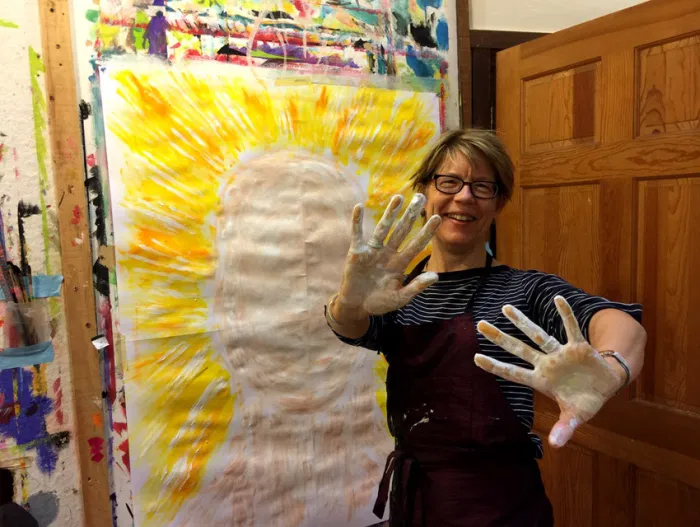
Let Your Painting Flow
Recently, I found myself questioning why this opportunity to “make” for no reason feels important — and at times so uncomfortable. Is it enough to play, to allow the imagination unfettered (and un-judged) freedom to run across the paper, to have fun?
These questions arose after two distinct events. First, I experienced a profound sense of the purposelessness of process painting while on the ten-day Molokai retreat in 2015. Second, I encountered a fellow painter who reacted against a characterization of her process painting as play. I began to read about the importance of play in our adult lives and as human beings, and to investigate the qualities of this painting-play that engage me again and again.
In particular, I’m struck by how purposelessness lends an element of freedom to our explorations and allows for expansiveness and joy, qualities that are often missing when we are making for a reason. John Cage captures the essence of my intuition that purposeless play awakens us and lets us experience our own liveliness:
And what is the purpose of writing music? … The answer must take the form of a paradox: a purposeful purposelessness or purposeless play. This play, however, is an affirmation of life — not an attempt to bring order out of chaos nor to suggest improvements in creation, but simply a way of waking up to the very life we’re living, which is so excellent once one gets one’s mind and one’s desires out of its way and lets it act of its own accord.
During the course of the Esalen workshop, I dropped deeply into an un-self-conscious state that has been described by the psychologist Mihaly Csiksentmihalyi as “flow.” For me, this state of flow comprises various realms of being:
- imagination
- physicality
- unfettered curiosity
- pure absorption
- fearlessness
- endless experimentation, and
- delight.
Process painting is an opportunity to engage all of these realms, and to nourish and be awakened by our own endless creative energy.
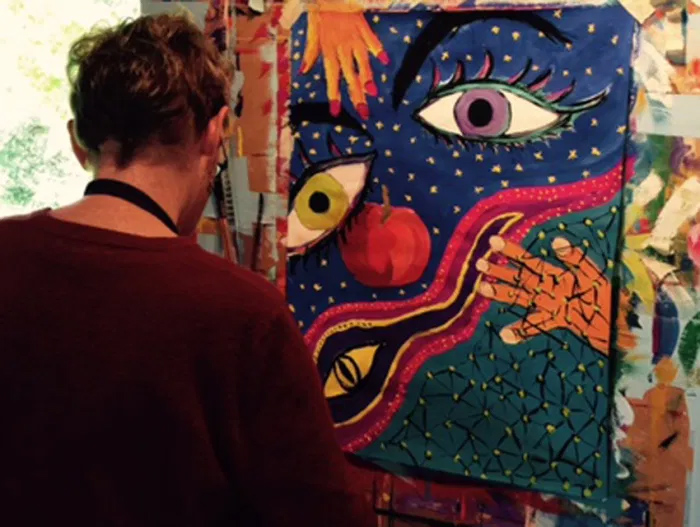
More Information
To learn more about the benefits of “purposelessness,” see The Purpose of Purposelessness, by Leon F. Seltzer, Ph.D, on the website of Psychology Today.
For more on “flow,” watch Mihaly Csikszentmihalyi’s TED talk.
The following books are good resources on play and creativity:
- Beyond Love and Work: Why Adults Need to Play, by Lenore Terr, M.D.
- The Universe is a Green Dragon, by Brian Swimme
To find out more about upcoming process painting workshops, see our Programs page.

Lydia (right) talks with a process painter at a workshop held at the Great Vow Zen Center.
Lydia Marshall is a third-year apprentice with The Painting Experience. She has a B.A. in studio arts and an M.A. in architecture. As a facilitator, she is honored to be present with others as they discover their inner images, energies, and stories — and she brings a deep love and respect for the artist that lives in each of us.

